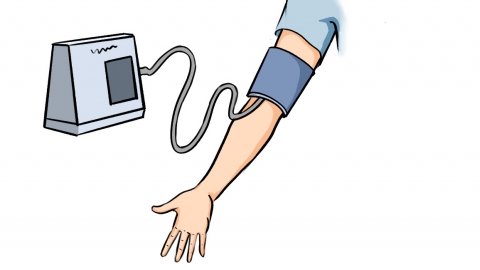What does it mean when both systolic and diastolic blood pressure are high?
High systolic and diastolic blood pressure generally refers to elevated readings in both systolic and diastolic pressures. This may be caused by long-term high-salt diet, lack of physical activity, glomerulonephritis, primary aldosteronism, essential hypertension, and other factors. Management should be based on specific conditions. It is recommended to visit a hospital promptly and follow medical advice for treatment.

1. Long-term high-salt diet: Excessive salt intake increases sodium ions in the body, leading to sodium and water retention, increased blood volume, and greater cardiac pumping pressure, which can elevate both systolic and diastolic blood pressure. To improve this, limit daily salt intake to less than 5 grams, reduce consumption of processed and pickled foods, and eat more fresh fruits and vegetables such as apples and spinach, which can help lower blood pressure.
2. Lack of physical activity: Prolonged sedentary behavior slows metabolism, promotes fat accumulation, increases body weight, raises peripheral vascular resistance, and elevates blood pressure. Aim for at least 150 minutes per week of moderate-intensity aerobic exercise, such as brisk walking or swimming, or 75 minutes of vigorous-intensity aerobic exercise, such as running. Strength training may also be beneficial for weight control and lowering blood pressure.
3. Glomerulonephritis: This condition may be related to environmental factors or infections. Damage to kidney tissue can activate the renin-angiotensin-aldosterone system, potentially causing elevated blood pressure along with symptoms such as proteinuria, hematuria, and edema. It is recommended to follow medical guidance for the use of medications such as captopril tablets, valsartan capsules, and nifedipine controlled-release tablets to aid recovery.
4. Primary aldosteronism: Excessive aldosterone secretion by the adrenal cortex leads to sodium and water retention, increased blood volume, and vasoconstriction, causing hypertension. Hypokalemia is often present, with symptoms such as fatigue, muscle weakness, and increased nocturnal urination. Patients may follow medical guidance to use spironolactone tablets, eplerenone tablets, amlodipine tablets, and other medications to antagonize aldosterone effects, dilate blood vessels, and lower blood pressure.
5. Essential hypertension: The exact pathogenesis of essential hypertension is not fully understood but may be related to multiple factors including genetics, environment, and lifestyle. Increased vascular wall sensitivity to pressor substances can elevate blood pressure, potentially accompanied by symptoms such as headache, dizziness, and palpitations. Patients may follow medical guidance to use medications such as nifedipine tablets, methyldopa tablets, and captopril sustained-release tablets to alleviate symptoms.
In daily life, it is recommended to improve lifestyle habits, maintain regular作息, follow a low-salt diet, increase aerobic exercise such as brisk walking or jogging, quit smoking, limit alcohol consumption, and reduce exposure to adverse stimuli.







